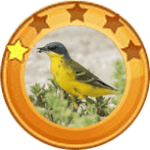- Home
- Shop
- Forest Series
- Grassland Series
- Desert Series
- Contact
- Home
- Shop
- Forest Series
- Grassland Series
- Desert Series
- Contact





Licensed Benz for Kids
Real-looking design and plastic wheels of the electric car will let your kid be in the highlight. Seats one rider, ages 3-6, with a maximum weight of 66 lb.
Easy to operate
The dashboard includes sorts of function buttons like soft start key, forward & backward button, which can work with pedal together when kids are driving themselves.
Safe Driving Experience
Goes forward and reverse at a maximum speed of 1.86-3.11 mph. The seat with a safety belt definitely comfortable and looking fancy. Double lockable doors, soft start, and power traction strip tires are involved.


CHARACTERISTICS
The Chipmunk is a member of the family Mammalia, Rodentia and Sciuridae. It is also known as the Striped Squirrel, the Timber Tiger and the Mini-bear. The body length among most Chipmunks ranges from 5.5 to 6.3 inches and the tail length is 5 Inches. Chipmunks typically weigh about 0.02 pounds and live about 5 to 10 years. They have small but prominent ears which face forwards, and small eyes on the sides of their heads. Most wild Chipmunks are lively.


Lorem ipsum dolor sit amet, consectetur adipiscing elit. Ut elit tellus, luctus nec ullamcorper mattis, pulvinar dapibus leo.


CHARACTERISTICS
The Western Yellow Wagtail is a small passerine in the wagtail family Motacillidae. It is a slender 5.9-6.3 inches long bird, with the characteristic long, constantly wagging tail of its genus. It is the shortest-tailed of the European wagtails. The breeding adult male is basically olive above and yellow below. In other plumages, the yellow may be diluted by white.

RANGE AND HABITAT
The Western Yellow Wagtail breeds in much of temperate Europe and Asia. It is resident in the milder parts of its range, such as western Europe, but northern and eastern populations migrate to Africa and south Asia.

DIET
The Western Yellow Wagtail mainly feeds on insects, mostly on the ground and sometimes in the air. The main food species are ants, gnats, leafhoppers, and Coleoptera and Lepidoptera insects.

BEHAVIOR
This insectivorous bird inhabits open country near water, such as wet meadows. They usually come in pairs or small flocks of 3 to 5 individuals, and large flocks of dozens of individuals can also be seen during the migration period. The call is a high-pitched jeet.
From May to July, the Western Yellow Wagtail breeds. It nests in tussocks, laying 4–8 speckled eggs. The hatching is mainly undertaken by the female bird, and the incubation period is 14 days. The male and female parents brood together, and there are two feeding peaks every day.

The Chipmunk is a member of the family Mammalia, Rodentia and Sciuridae. It is also known as the Striped Squirrel, the Timber Tiger and the Mini-bear. The body length among most Chipmunks ranges from 5.5 to 6.3 inches and the tail length is 5 inches. Chipmunks typically weigh about 0.02 pounds and live about 5 to 10 years. They have small but prominent ears which face forwards, small eyes on the sides of their heads. Most wild Chipmunks are lively.
The Red Squirrel, a member of the Sciuridae, is an arboreal, omnivorous rodent often referred to as a Forest Seeder and folklore as the Devil King Squirrel.
The Arizona Gray Squirrel, also known as the American Gray Squirrel, is a member of the family Rodentia and Sciuridae. It is small in size, with gray fur and a belly between white and cream. It has long ears, no tufts of fur and a fluffy tail edged in white. The body is about 16-20 inches long and weighs up to 1.4 pounds.
The Rock Squirrel, also known as Sao Maozi or Stone Mouse, belongs to the rodent and is a species in the family Sciuridae. The most common natural predators of the Rock Squirrel include bobcats, owls, eagles and snakes. Though the Rock Squirrel is cute, alert, and courageous, it is still considered a pest due to its habit of destroying crops.
The Abert’s Squirrel is a member of the genus Sciurus with a body length of 18-22.8 inches, a tail length of 7.5-9.8 inches and a weight of 2.2 pounds, and can live up to 10 years in the wild. Its most distinctive feature is tassels of fur about 0.8-1.2 inches long at the tip of its ears, which looks very interesting. In addition, it is alert and agile.

The Grumpus Rumpus
Mama Wagtail was worried.
Baby Grumpus just did not know how to show that he was happy.
“Turn up the corners of your mouth just a wee bit, Grumpus,” Mama Wagtail would say.
But little Grumpus only looked grumpier.
“I cannot,” he said, ruffling his feathers.
“My mouth goes down instead of up.”
Mama Wagtail had an idea. She took Grumpus and flew down to Dog.
“Dog, how do you show that you are happy?” she asked.
“Woof!” barked Dog. “I wag my tail really hard when I am happy.”
Thump! Thump!
Mama Wagtail then went to Cat.
“Cat, how do you show that you are happy?” she asked.
“Miaow!” mewed Cat. “I purr when I feel happy.”
Purrrrr! Purrrrr!
Mama Wagtail hopped over to Pig.
“Pig, will you show Grumpus what you do when you are happy?” she asked.
“Khhrr khrr,” grunted Pig, jumping straight into a large puddle of dirt. “I roll in mud when I feel happy.”
Splash! Sploosh!
Just then Papa Wagtail arrived.
“How is my little boy?” he whistled.
Papa Wagtail was very happy to see their baby. He whistled, swooped up and looped around.
That’s how happy he was.
“I think I can also do that. I am happy!” cried Grumpus.
And off they all went whistling, swooping up and looping happily.




Follow Us: